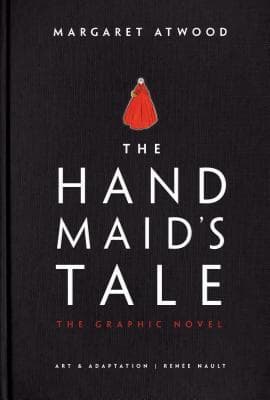
Book Review Summary: The Handmaid's Tale: The Graphic Novel
Introduction
"The Handmaid's Tale: The Graphic Novel" is a thought-provoking adaptation of Margaret Atwood's classic dystopian novel. This graphic novel, skillfully illustrated by Renée Nault, brings the chilling world of Gilead to life in a visually stunning and affecting manner. The story follows Offred, a Handmaid who serves in the household of the Commander and his wife, and explores themes of oppression, rebellion, and the human spirit's resilience in the face of adversity. In this article, we will delve into the author's background, analyze readers' opinions, and summarize the reasons for both recommending and not recommending this book.
About Renée Nault
Renée Nault is a talented Canadian artist, illustrator, and graphic novelist known for her vivid watercolor and ink illustrations. Her work has been featured in various books, magazines, newspapers, and advertising around the world. Nault's ability to capture emotions and convey complex stories through her artistry shines through in her adaptation of "The Handmaid's Tale." Her stunning artwork adds depth and impact to the story, making it a must-read for fans of both the novel and graphic novels.
Analysis of Views
- Effective Adaptation: Readers praise Renée Nault for her successful adaptation of Margaret Atwood's original story into a graphic novel format. The artwork is described as beautiful, appropriate, and affecting, capturing the essence of the story while maintaining its impact.
- Parallels to Current Culture: Many readers find parallels between the dystopian world of Gilead and our current social and political climate. The portrayal of governmental overreach and the consequences it has on individuals resonates with readers, making the story both terrifying and relevant.
- Engaging Storytelling: The story itself is widely regarded as a great and terrifying one. Readers appreciate the parallels to real-world issues and find the portrayal of women's oppression and resistance inspiring. The graphic novel format adds a new dimension to the storytelling, making it accessible to a wider audience.
- Mesmerizing Artwork: Renée Nault's artwork is highly praised for its mesmerizing quality. The combination of colors, art sequence, dialogue presentation, and polished artwork captivates readers and enhances their experience of the story. The artwork's vividness brings the dystopian world to life, making it visually appealing.
- Powerful Themes: The themes of loss, loneliness, grief, love, and rebellion explored in "The Handmaid's Tale" resonate with readers. The portrayal of women's oppression and the struggle for freedom resonates with many, highlighting the importance of uplifting oneself and resisting oppressive systems.
Reasons for Recommendation
- Engaging Adaptation: Renée Nault's adaptation of "The Handmaid's Tale" into a graphic novel format successfully captures the essence of Margaret Atwood's original story while adding a new dimension to it. Readers appreciate the artwork's beauty and appropriateness in conveying the story's emotions.
- Relevant Themes: The exploration of themes such as oppression, resistance, and women's empowerment resonates with readers, making the story both terrifying and relevant. The graphic novel format allows for a more engaging reading experience that can inspire reflection on current social issues.
- Mesmerizing Artwork: Renée Nault's mesmerizing artwork adds depth and impact to the story, making it visually appealing. The vivid colors and expressive illustrations bring the dystopian world to life, immersing readers in the story on a deeper level.
Reasons for Not Recommendation
- Dystopian Content: Some readers may find the dystopian content of "The Handmaid's Tale" unsettling or triggering. The portrayal of a society where women are oppressed and denied basic freedoms can be distressing for some readers, particularly those who are sensitive to such themes.
- Limited Accessibility: While many readers appreciate the graphic novel format, some may find it limiting in terms of accessibility. They may prefer reading the original novel or watching the TV show adaptation instead of experiencing the story through illustrations alone. However, this limitation is subjective and may not be a concern for all readers.
Conclusion
"The Handmaid's Tale: The Graphic Novel" is a thought-provoking adaptation that brings Margaret Atwood's classic dystopian novel to life through Renée Nault's stunning illustrations. Readers praise the effective adaptation, engaging storytelling, mesmerizing artwork, relevant themes, and powerful messages conveyed through Offred's journey. While some readers may find the dystopian content unsettling or prefer other formats to experience the story, "The Handmaid's Tale" remains a must-read for those seeking a haunting exploration of oppression, rebellion, and human resilience in a world gone awry.